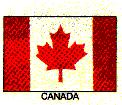

The Rebellion of 1837 was about many revolts and attacks against the rule of Great Britain. Peasants and Civilians were fighting for Democracy and Independence. By the time the crisis ended in 1838, hundreds had been killed, thousands were refugees, and the colonial regime was firmly reestablished.
Roots of The Crisis
Tensions had been building for years before 1837 in the provinces of Lower
Canada (now Québec) and Upper Canada (now Ontario). Many movements
in both provinces led campaigns to combat special privileges and strengthen
the powers of the elected assemblies. In both provinces the assembly was
one chamber of the legislature. The other chamber was the legislative council,
whose members were appointed by the British government and could change
the decisions of the assembly. The legislative council was a power base
for the British governor and his ruling clique, as was the governorís executive
council.
Matters reached a crisis first in Lower Canada, the only colony where French
Canadians formed the majority of the population. The ruling clique was
doubly unpopular there because French Canadians were largely excluded from
it. Opposing it were the Patriotes, a party led by Louis Joseph Papineau
which was a strong voice in the assembly for the nationalist and democratic
thoughts of the French Canadians. In 1834, the Patriotes sent to Great
Britain a list of demands for change, called the Ninety-Two Resolutions.
Among the demands were that the legislative council be elected and that
the members of the executive council be chosen by the assembly. The Patriotes
also continued and intensified their policy of noncooperation with the
ruling clique, eventually paralyzing effective government in Lower Canada.
In early 1837, Great Britain moved
to break the Patriotesí power. Lord John Russell, the British secretary
for war and the colonies, issued ten resolutions affirming policies that
the Patriotes opposed. He refused to consider the demands for reform of
the legislative and executive councils. The things expressed in Russellís
resolutions also applied to Upper Canada.
Violent Clashes
Lower Canada reacted with protests in the spring and summer of 1837, and
British attempts to suppress them only made them in a deeper crisis. Peasants
living around Montréal began forming local militias and, in some
cases, driving out magistrates and large landlords. The governor called
in troops from other parts of the British Empire and, in November, sent
forces to destroy Patriote strongholds outside Montréal to arrest
the agitators. A Patriote force beat them back at the Battle of Saint-Denis,
but the professional soldiers later caught the rebels at Saint-Charles
and Saint-Eustache.
Involvement of Upper Canada
In Upper Canada, the colonial system had greater public support, especially
among recent immigrants from Great Britain. Still, there was widespread
hostility to the clique of unelected officeholders, which in upper Canada
was called the Family Compact. William Lyon Mackenzie, a
journalist and former mayor of
the capital city of Toronto, didnít like what the government was doing.
When rebellion erupted in Lower Canada, he decided it was time for a strike
in support of the Patriotes. Men from the countryside north of Toronto
assembled to march against the capital, but they were easily defeated and
captured by the loyal militia. By the middle of December 1837, rebellion
had been crushed in both provinces, and Lower Canada was under martial
law and military occupation.
Continuation of the Struggle
Many rebels took refuge in the northern United States, where, with the
help of American supporters, they formed secret friends called Huntersí
Lodges to renew the rebellion. In 1838 the lodges conducted several raids
across the border, and there was another short-lived rising in Lower Canada.
The consequence was more severe after this second round of conflict; many
people were jailed, more than 50 transported to Australia, and a few hanged.
The Aftermath
After the rebellion, colonial rule was strengthened. John George Lambton,
1st Earl of Durham, who was appointed governor-general in 1838, wrote an
report calling for a merge of the two Canadaís. With this, the two Canadaís
would come together and take away any differences caused by the clash of
the two cultures, English and French. Great Britain carried out the merger
using the Act of Union, effective in 1841. But the French Canadians never
accepted this forced union with English-speaking Canada,
imposed upon them as punishment
for their revolt, and they retained their language and identity. The Rebellion
of 1837 was a tremendous loss of people and it showed how much the British
could withstand in a 5 year period.